VU-0001 Joystick for VG-5000 (Boxed)
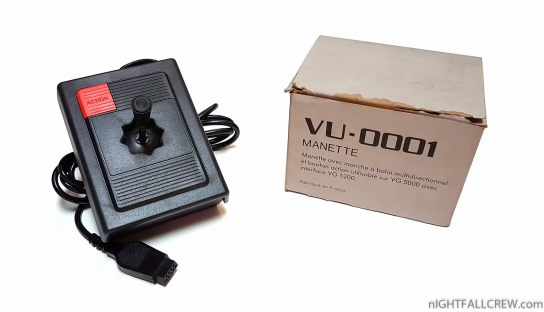
The VU-0001 joystick can be used with the VG-5000 Computer series equipped with a VG-5200 interface.

The VU-0001 joystick can be used with the VG-5000 Computer series equipped with a VG-5200 interface.
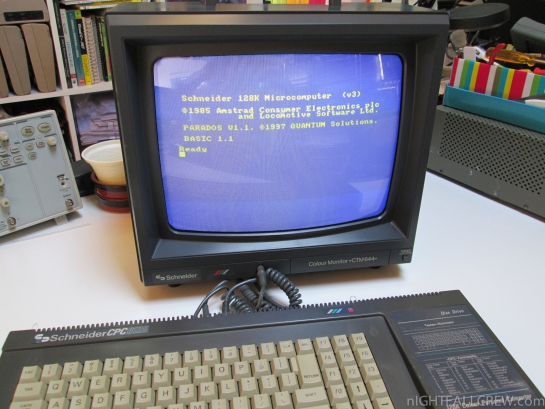
Autopsy:
from CPCWiki:
The Amstrad (Schneider) CTM640/CTM644 are two colour monitors sold together with the classic CPC-computers. Optionally, the computer could have been purchased with GT64/GT65 green monitors. The only difference between the CTM640 and CTM644 models is the additional 12V power supply for the CPC664/CPC6128′s disk drive in the later model.
With the arrival of the CPC664 and CPC6128 models, the existing stock of CTM640 monitors was sold out and later only CTM644 monitors were sold, even with the CPC464. For that reason, the 12V power outlet was designed as a socket for a cable coming from the CPC, while all other connections were made with cables coming from the monitor.
Amstrad (Schneider) Colour Monitor CTM 644 demostration:
source: cpcwiki.eu
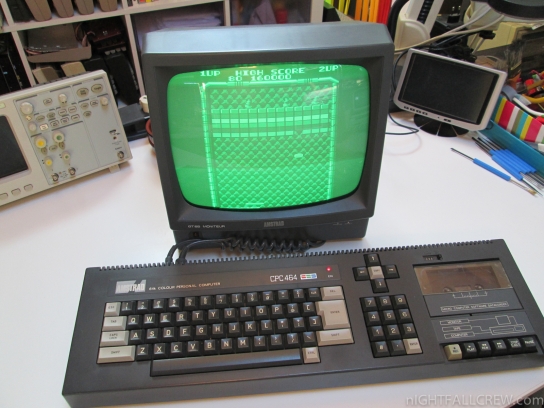
Autopsy:
from Wikipedia:
The Amstrad CPC (short for Colour Personal Computer) is a series of 8-bit home computers produced by Amstrad between 1984 and 1990. It was designed to compete in the mid-1980s home computer market dominated by the Commodore 64 and the Sinclair ZX Spectrum, where it successfully established itself primarily in the United Kingdom, France, Spain, and the German-speaking parts of Europe.
The series spawned a total of six distinct models: The CPC464, CPC664, and CPC6128 were highly successful competitors in the European home computer market. The later plus models, 464plus and 6128plus, efforts to prolong the system’s lifecycle with hardware updates, were considerably less successful, as was the attempt to repackage the plus hardware into a game console as the GX4000.
The CPC models’ hardware is based on the Zilog Z80A CPU, complemented with either 64 or 128 kB of memory. Their computer-in-a-keyboard design prominently features an integrated storage device, either a compact cassette deck or 3″ floppy disk drive. The main units were only sold bundled with a colour or monochrome monitor that doubles as the main unit’s power supply. Additionally, a wide range of first and third party hardware extensions such as external disk drives, printers, and memory extensions, was available.
The CPC series was pitched against other home computers primarily used to play video games and enjoyed a strong supply of game software. The comparatively low price for a complete computer system with dedicated monitor, its high resolution monochrome text and graphic capabilities and the possibility to run CP/M software also rendered the system attractive for business users, which was reflected by a wide selection of application software.
During its lifetime, the CPC series sold approximately three million units.
Replacement/Adaptation of a power switch for Amstrad CPC 464:
source: wikipedia cpcwiki.eu
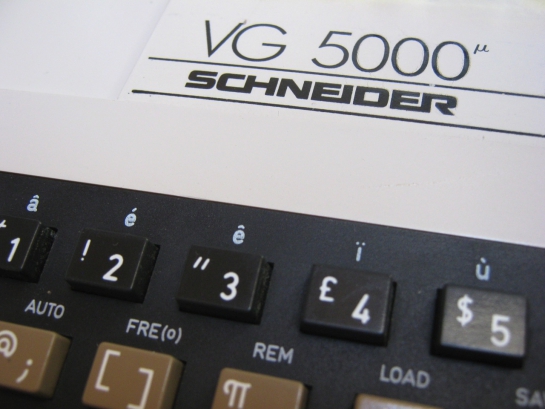
Autopsy:
from Old-Computers Museum:
Radiola and Schneider became Philips subsidiaries in 1990 when Philips bought the French Schneider TV assembly plant located in Le Mans – the West of France – and then named Radiotechnique (RTC). The Radiola, Schneider and Philips VG-5000 were exactly same machines, apart from the case colour. They were conceived and manufactured in the RTC Le Mans factory and only intended for the French market.
At the time, RTC also made the “Minitel”, a phone video terminal almost each French family owned. To save costs, the VG-5000 keyboard was thus taken from the Minitel and slightly altered. Several Philips computer were also sold under Radiola and Schneider names, among them, the VG-8000 and VG-8020. Although it was sold under three brand names, the VG-5000 didn’t sell well, because of its limited capacities, rare and expensive peripherals, and lack of good software.
source: old-computers.com vg5k.free.fr
My homebrew Powersupply adaptor for Amstrad CPC 6128 with a External Floppy Drive 3½.
source: cpcwiki.eu jrp king homepage kjthacker.f2s.com
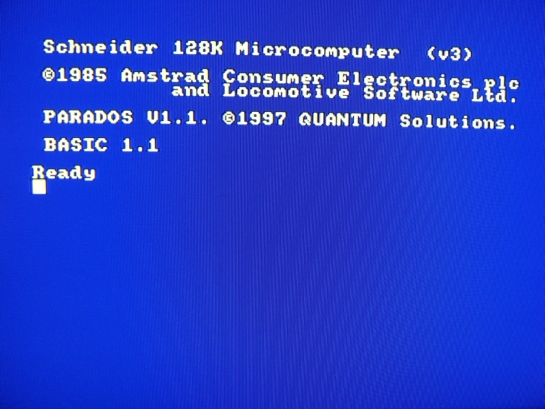
Parados Installation Photo Gallery:
ParaDOS is 16kB ROM that replaces the AmsDOS. Allows to use double-sided floppy disks and some more disk formats.
source: grimware.org
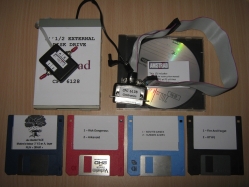
Foto review of 3½ Floppy adapter:
Thanks to B.C for the Floppy adapter.
source: ebay retro-zone.org amstrad hack page
My homebrew Powersupply adaptor & RGB/Audio Scart cable for Amstrad CPC 464/6128.
source: cpcwiki.eu jrp king homepage kjthacker.f2s.com
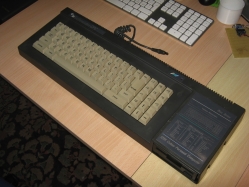
Autopsy:
from Wikipedia:
The Amstrad CPC (short for ‘Colour Personal Computer’) is a series of 8 bit home computers produced by Amstrad between 1984 and 1990. It was designed to compete in the mid-1980s home computer market dominated by the Commodore 64 and the Sinclair ZX Spectrum, where it successfully established itself, especially in the United Kingdom, France, Spain, and the German-speaking parts of Europe.
The series spawned a total of six distinct models: The CPC464, CPC664, and CPC6128 were highly successful competitors in the home computer market. The later plus models, 464plus and 6128plus, efforts to prolong the system’s lifecycle with hardware updates, were considerably less successful, as was the attempt to repackage the 464plus hardware into a game console as the GX4000.
The CPC models’ hardware was based on the Zilog Z80A CPU, complemented with either 64 or 128 kilobytes of memory. Their computer-in-a-keyboard design prominently featured an integrated data drive (compact cassette or 3″ floppy disk). The main units were only sold bundled with a color or monochrome monitor that doubled as the main unit’s power supply. Additionally, a wide range of first- and third-party hardware extensions such as disk drives (for the CPC464), printers, and memory extensions, was available.
The CPC series was pitched against other home computers primarily used to play video games and enjoyed a strong supply of first-party (Amsoft) and third-party game software. The comparatively low price for a complete computer system with dedicated monitor, its high resolution monochrome text and graphic capabilities and the possibility to run CP/M software also rendered the system attractive for business users, which was reflected by a wide selection of application software.
During its lifetime, the CPC series sold approximately 3 million units.
source: wikipedia cpcwiki.eu
Recent Comments